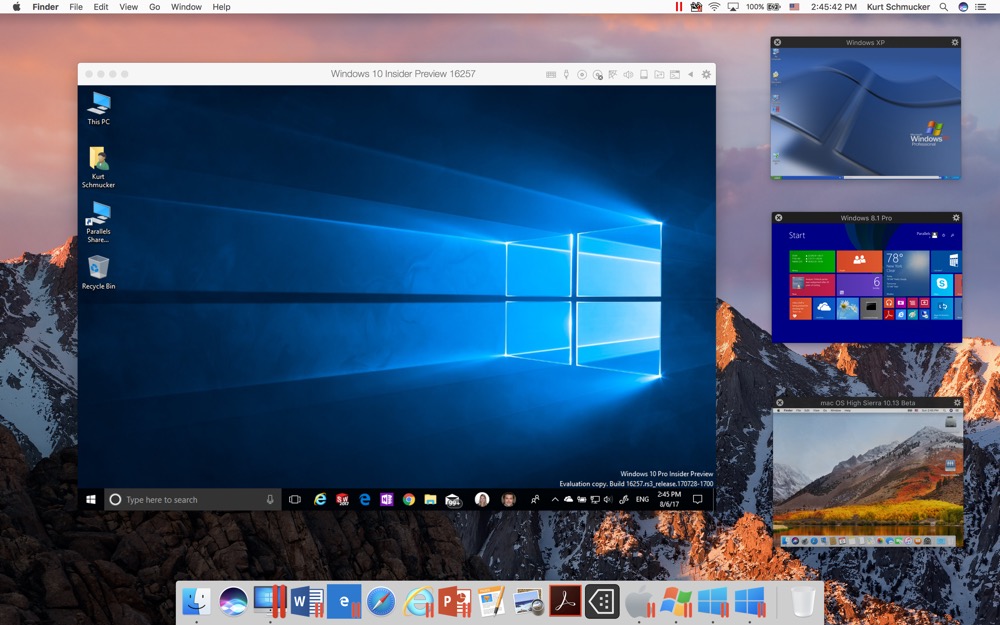

- #Parallels for mac create a new virtual machine mac os x#
- #Parallels for mac create a new virtual machine install#
- #Parallels for mac create a new virtual machine Pc#
Continue the Migration by migrating from the disk drive of your old Mac.

You should see the old boot volume in the Finder of your new Mac. To unmount the volume, use the Eject button next to the disk icon. After booting, stop at the Migration step. Note: If you are browsing the contents of a suspended virtual machine in Finder, you cannot delete, move, or otherwise modify its files.
#Parallels for mac create a new virtual machine mac os x#
You can manage the virtual machine files just as you manage your Mac OS X files in Finder windows. To browse the contents of a volume, click its icon in the sidebar of the Finder window. Then click to open the control center window, you will see a + sign, click the + sign to add a new virtual machine again, as follows: After that, the. The icon for the selected hard disk appears in the sidebar of the Finder window, together with other Mac OS X icons. If you want to mount a single virtual hard disk, double-click the virtual hard disk file to mount it with Parallels Mounter. If you choose the PVM file of a Parallels virtual machine or the configuration file of a third-party virtual machine that has several virtual hard disks, all its volumes will appear as mounted in Finder. VirtualBox configuration file (.xml) or virtual hard disk file (.vdi). vmwarevm) or virtual hard disk file (.vmdk). Parallels bundle (.pvm) or configuration file (.pvs) or virtual hard disk file (.hdd). If you then transfer this virtual machine to another Mac, Parallels Desktop will allocate CPU and memory based on the new hardware configuration. You can mount the following virtual machines and hard disks: Parallels Desktop evaluates your Macs hardware and automatically allocates as many resources to your virtual machine as needed to provide the best possible experience with Windows. To mount the hard disk of a particular virtual machine, right-click this virtual machine's file and choose Open With > Parallels Mounter or Open With > Other > Library > Parallels > Parallels Mounter from the shortcut menu. The default paths for storing Parallels virtual machines are /Users//Documents/Parallels/ and /Users/Shared. For Parallels virtual machines, right-click the virtual machine name in the Parallels Virtual Machines list and select Show in Finder from the context menu. NSoT engineers have built Vagrantfiles for you to.
#Parallels for mac create a new virtual machine install#
If you want to manage the virtual machine content without starting the virtual machine, you can mount the virtual hard disks manually using Parallels Mounter:īrowse the virtual machine files in Finder. brew cask install virtualbox Now install Vagrant either from the website or use homebrew for installing it. With the reinstalled OS, the files stored on it should be available, unless it was reformatted.įrom Parallels Help under 'Browsing Virtual Hard Disks in Finder':
#Parallels for mac create a new virtual machine Pc#
Install a simple application on your PC, connect it to your Mac, and VMware Fusion will detect your PC and take care of the rest. you were able to reinstall the OS so you were able to boot a CD/DVD from the image - was there a Win7 repair option? includes a simple Migration Assistant for Windows that allows you to quickly and easily move your entire PC to your Mac as a virtual machine.


 0 kommentar(er)
0 kommentar(er)
